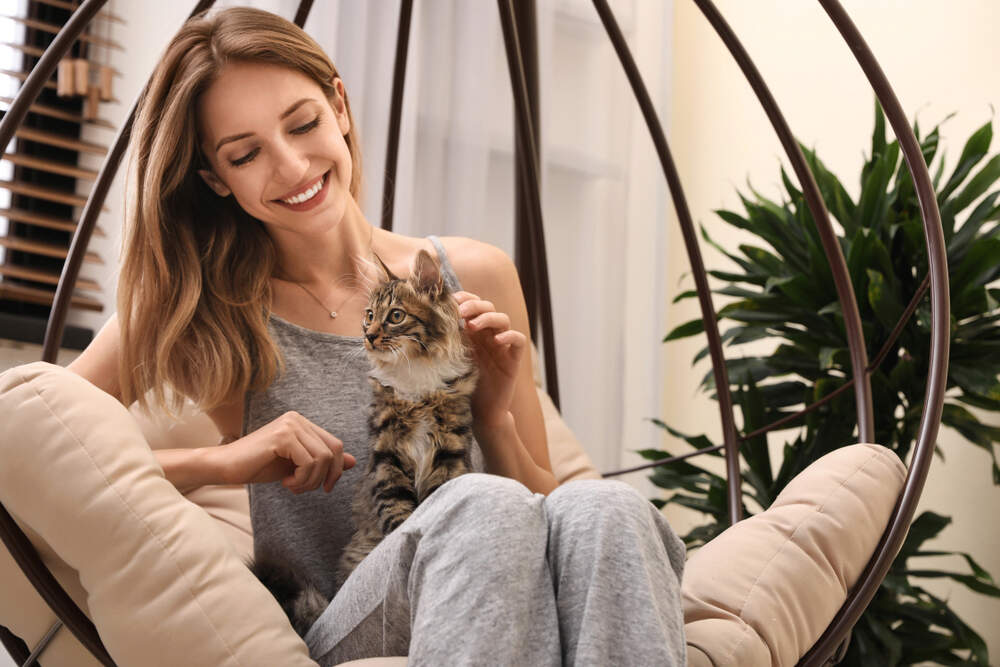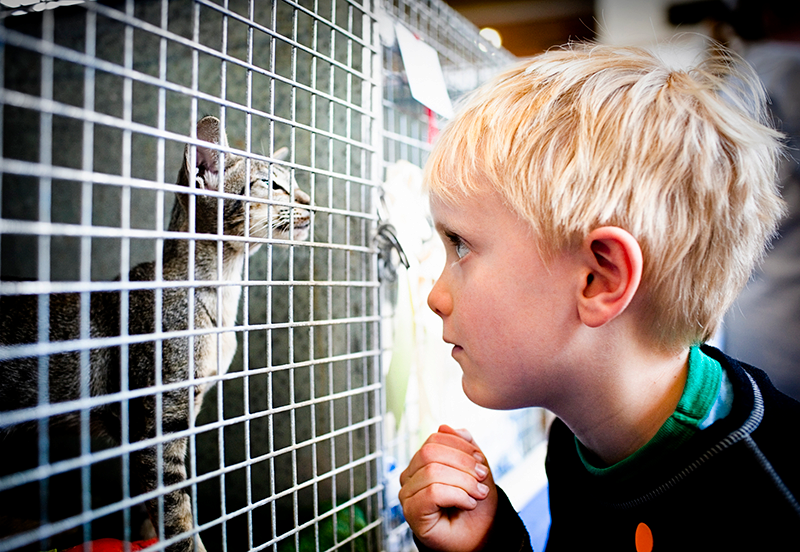Finding Your Dream Cat
Are you wondering, "What kind of cat should I get?" The answer involves deciding what breed you want, where you want to get your cat, and what temperament fits your lifestyle best. Whether you decide to adopt a purebred or a mixed-breed kitty, it's important to ask lots of questions, including which breeds are best for cuddling and which breeds are extra playful.
Choose the Best Cat for Your Lifestyle
The first questions you ask yourself should focus on the breed or the temperament that best fits with your lifestyle.
Kitten or Cat
Your first decision is whether you want a kitten or an older adult cat. While kittens are playful, cute, and full of energy, older cats often need less supervision and may want more snuggles. You can typically know an older cat's quirks before adopting if you ask the rescue or veterinarian.
Long-haired or Short-haired
Do you want a short-haired cat, a long-haired cat, or a hairless breed? The longer the fur, the more brushing your cat will need, but this can also be a great time to bond with your new feline. Longer-haired cats may also need the fur on their hindquarters trimmed to avoid litter accidents.
As for shedding, it really depends on the breed. Some short-haired cats shed a lot! But there are five breeds that either don't shed or shed less. These also have unique needs, like needing baths more often, but in some cases, they may be better for people with certain allergies.
Cat Color
Do you have a specific color or pattern you prefer? Some people have a soft spot for orange cats, while others love their black cats. Every cat color has a fan club! If you like tabbies, there are six different patterns. Although color doesn't really influence temperament, some people do have their preferences.
Best Cat for Cuddling
Some people just really want a cat to cuddle. While some breeds tend to be more affectionate than others, snuggle-levels can vary from cat to cat. If this is important to you, look for a kitten that purrs when you come near rather than hides. Watch how an older cat reacts to meeting you. Does she shy away or immediately come rub on your leg? Keep in mind that shyer cats can still warm up to you and be cuddly over time.
Breeds that tend to be more affectionate (although not guaranteed) are Ragdolls, Scottish Folds, Sphynx, Maine Coons, Persians, Bombays, Tonkinese, American Shorthairs, and Birman.1 But mixed breeds can be affectionate too, depending on the cat.
Energy Levels
You also want to consider energy levels. Certain purebred cats are known for being high energy and extra playful. For example, the Bengal cat is often highly sought after because of her exotic pattern and coloring. But this cat is also very high energy and needs a lot of exercise and play, along with high places to climb.2 If your cat needs a lot of exercise and doesn't get it, she may become destructive and start scratching and even spraying. Be sure to research the breed's temperament to know if you can offer what that breed needs.
Purebred or Mixed Breed
Either a purebred or a mixed breed cat is a wonderful option. It's easier to predict a purebred cat's personality and physical traits, although it's not guaranteed. Mixed breeds may be more of a surprise, but they may also be healthier because of their genetic variety.3
When looking for a specific temperament, nothing is guaranteed. Although breeds can certainly influence temperament, each cat is still an individual. Spend some time with your potential cat or kitten and see what type of personality he has.
Where to Find Your Cat
There are many options for finding your ideal cat, whether you're looking for a purebred or a mixed breed.
Animal Shelters and Rescues
You can find both purebreds and mixed breeds at animal shelters and local rescues. Some purebred cats are put up for adoption because they are not show-quality or do not meet a specific breed standard, but this will certainly not keep them from being wonderful pets.
Many owners bring their mixed breed cats and kittens to local shelters, too. This is often because they can no longer afford the pet or are moving and can't bring their pet with them. You may find quite a variety of cats to choose from at an animal shelter or local rescue. Some local pet stores may have agreements with local shelters to display their pets at the stores, and they'll typically have a prominent sign near the cats letting you know if that's the case.
If you fall in love with a kitty at a shelter, ask an employee or volunteer a few questions. You should know if a vet has examined the cat and if the cat is neutered or spayed. You may also want to ask if the organization has any information about the cat's background, like why the cat was brought to the shelter, vaccination records, or what type of food the cat currently eats. While this sort of information is probably not vital to the cat's well-being, it could be very helpful when attempting to transition your kitty to life at his new home.
Purebred Breeders
If you want a purebred cat, one of the best ways to locate a reputable breeder is to ask friends, relatives, or acquaintances with purebred cats. If that doesn't get you the information you're looking for, ask local veterinarians or animal shelters to recommend a breeder. Once you've narrowed your search to one or two breeders, set up a meeting with each. Be sure to ask for references and visit with some of their cats. A meeting like that should give you a great idea of both the breeder and the cats' personalities.
Purchasing a purebred cat is a significant investment and shouldn't be taken lightly. You should be extremely confident in your breeder before handing over any money. Once you've made your choice and it's time to bring your new cat home, remember that she should come with lineage papers and vaccinations, and she should be well-socialized since the first weeks of a cat's life are critical in the socialization process.
Preparing Your Home for Your Dream Cat
Once you've chosen your dream cat, it's time to get your home ready. Set up Comfort Zone Calming Diffusers around the house, plugging one into each room where your cat will spend most of his time. These release a drug-free, odorless vapor that mimics a cat's natural, calming pheromones. Set them up a few days before you bring your cat home.
Have a comfy bed where he can snuggle. Nervous cats might prefer an enclosed bed they can hide in when overwhelmed. Try to bring a blanket or toy from the shelter with you so your cat has some familiar smells nearby. Start feeding your cat with the same food he was already eating so he doesn't get a stomachache. And set up cat trees, cat scratchers, and window perches for your cat's entertainment.
No matter where you decide to obtain your cat and whether you decide on a purebred or a mixed breed, it's important to ask lots of questions. Don't worry that you're asking too many questions or being a bother. It is the rescue or breeder's job to answer your questions, and a good breeder or employee should be willing to address all your concerns. Then get your home ready to welcome your new best friend. Before you know it, you and your cat will be home, enjoying your new life together.
1. Murphy, Lauren. "10 Most Affectionate Cat Breeds." The Spruce Pets, 2 June 2020, https://www.thesprucepets.com/affectionate-cat-breeds-4846595.
2. Vet Street. "Bengal." VetStreet.com, http://www.vetstreet.com/cats/bengal.
3. Pawlisch, Deanne. "How to Choose Between Purebred and Mixed Breed Cats." WikiHow, 9 April 2019, https://www.wikihow.pet/Choose-Between-Purebred-and-Mixed-Breed-Cats.



